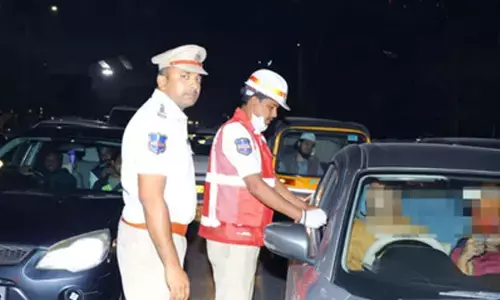7 days in the essence of incredible India

Orissa has never been a popular tourist destination but I decided to give it a try. After having visited the place, I realised, had I not taken this trip, I would have missed a lot. Orissa offers quaint national parks and wildlife, unpolluted beaches, temples, handicrafts and Buddhist relics.
Odisha is a place where one finds an astute amalgamation of spirituality, religion, culture, art and nature
Orissa has never been a popular tourist destination but I decided to give it a try. After having visited the place, I realised, had I not taken this trip, I would have missed a lot. Orissa offers quaint national parks and wildlife, unpolluted beaches, temples, handicrafts and Buddhist relics.
The ancient name of Orissa was Kalinga pertinent of the Kalinga war. However, in the year 1936 the name was changed to Orissa. The state is now called Odisha.
.jpg)
My seven day trip to Odisha was commendable. I boarded the Vishaka Express leaving at 4.00 pm from Secunderabad Station with friends and disembarked at Khurda Road. The mini bus we had hired from a travel agent drove us to Puri. Accommodation in Puri is not a problem as long as it is not the rush season and the rates are reasonable.
Day 1: I thought starting off on a religious note would be an excellent idea by visiting Puri Jagannath temple. This temple is famous for the yearly Chariot procession. The procession takes place during the months of June/July and every 12 years the same procession is carried out on a more grand scale because the idols of the three deities presiding in the temple are replaced. The Idols are made of Neem wood. It was absolutely a divine feeling to view the idols of Lord Jagannath, Subhadra and Balarama.
Day 2: After visiting Lord Jagannath, we left for Chilika Lake which is believed to be the largest lake in India located in the heart of Odisha. It measures upto 1,100 sq km and connects to the Bay of Bengal. We took a boat ride from Satpada and saw islands, migratory avian species and aquatic fauna. Dolphins emerge from the water and dance but due to so many roaring speed boats, they were reluctant to come out but we were lucky to spot one dolphin. After this we sailed to an island called ‘Sea Mouth Island’ where one can select the fish of choice and have it cooked freshly to each one’s taste The other attractions of this voyage are the assortment of fresh water pearl and corals the divers get and entice the tourists.
Day 3: The morning was spent with friends having breakfast in the nearby restaurant, do window shopping have lunch comprising of typical fish curry of the region to satisfy my palate.
Puri is famous for the 480 Kms of coastline stretched across Bay of Bengal. It is called the Golden Beach. On a full moon night it is a delight to see the high tides rising and coming to the shore and taking almost everything away with it.
Day 4: It was time to say goodbye to Puri and move on to Bhubaneshwar stopping by at the Konark Sun Temple, 36 Kms from Puri. The Sun Temple was made in the 13th century CE It took 12 years to complete the structure with 1,200 architects working. The Temple is built in the form of a chariot comprising of 24 wheels and 7 horses. The architecture and the sculpture is referred as poetry in stone.
Poet Rabindranath Tagore was so enthused by its beauty that he proclaimed “Here the language of man is defeated by the language of the stone.” After viewing the captivating structure and the sculptures, we moved to the Dhaulagiri – 8 kms from Bhubaneswar. The Shanti Stupa built by the Japanese is located here. This place commemorates the site as one of the greatest religious conversions in the history. Emperor Ashoka adopted Buddhism and the doctrine of non-violence at Dhauli after the dreadful battle where thousands of men, women and children lost their lives in the 3rd century BCE.
Day 5: A leisurely day: We set out to venture the local handicraft centers. The artisans were very kind to demonstrate their art to us. Each piece of painting costs in thousands and is believed that there are just a few outlets left of this nature. We shopped for silver philgiri jewelry and bought some to add to our collection.
Day 6: On our way to the twin hills – Udaygiri and Khandagiri fort. There are 19 caves in Khandagiri and 44 caves in Udaygiri. The sages, kings and their consorts practiced Yoga here and also lived in the premises. Some of the preachings is still found on the rocks. The script then used was called ‘Pali’.
The finale of our trip was the Nandankanan Zoo (25 kms from Bhubaneswar) which is famous for Royal Bengal Tigers. The safari took us to see the ferocious Lions on the loose hardly ten yards away from our vehicle.
Day 7: All the fun and frolic came to an end and we boarded the train at Bhubaneswar Railway station to return home.














